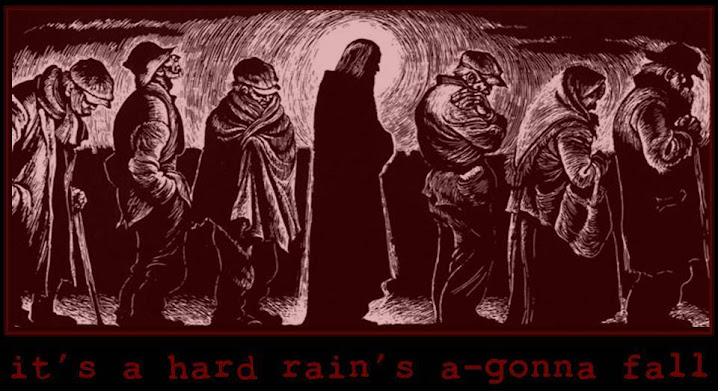In troubling economic times such as these, there tends to be a lot of discussion about bubbles and bursts, dwindling resources and bottlenecking. The world's diplomatic leaders, gathering a few weeks ago in Copenhagen to discuss the impact of human economy on ecology, highlighted the sensitive and crucial import of these questions. Drastic times, as they say, call for drastic measures. There may be disagreement among the masses as to whether the times really even are drastic, but that doesn't stop the powers that be from suggesting some dire solutions.
Infamously, at the height of the Copenhagen summit, a Canadian journalist started a buzz about adopting China's one-child policy for the good of the planet. The suggestion is pretty audacious, but not only for its macabre Malthusian methods. It is outrageous because it would actually put the final nail in an already tightly clamped coffin-lid.
I speak of the coffin of Demographic Winter. I am not here suggesting that the human race, as a whole, faces imminent extinction - unless the cosmos smacks us to honor its commitment to the Mayan prophecy for 2012. No, I don't fear the extinction of our whole race. But parts of it are certainly in that coffin, buried alive, and if ever rescued, they will only be wraiths of their former selves.
The two-part documentary Demographic Winter and Demographic Bomb are a must-see for all Distributists, or for anyone who wants to think sanely about the human economy and the proximate future of civilization.
It's really difficult to sum up these two films. They're well-made documentaries polling the opinions of many scholars from a wide disciplinary background in order to contradict a myth that's been plaguing our culture in a particular way since Malthus and the Eugenics craze. The myth basically goes that the world is only so big, and what with better medicine and better resources and such, we're starting to crowd the place. Despite a well-publicized statistic that all of humanity could live with reasonable comfort within the confines of the state of Texas and maybe some land in neighboring parts, nevertheless the overpopulation idea still gets a lot of credence. Look at China's one-child policy.
In fact, please do look at China's one-child policy: its current state, that is. It's a Social Security nightmare. And it's not just China. In nearly every developed country, human beings are undercutting the necessary "breeding rate" of replacement (2.3 children per family) by a significant margin. In China's case, this margin - institutionalized - is a whole half deficit.
A simple tree chart would suffice to illustrate. A sustainable population depends on parents having children enough that the children are able to care for their parents in their old age while also raising families of their own. But in the industrialized nations of the world (and increasingly in underdeveloped nations, due to enforced policies of sterilization and the like, employed by the UN and other "aid" organizations), you have an aging population. Each four grandparents are represented, maybe, by only one grandchild. When the baby-boomers retire, the "bust" of the demographic cycle will have an inordinate demand of intergenerational sustainability placed on its shoulders. Social Security is only the tip of the iceberg. Medicare and Medicaid are huge vacuums that will continue to put the squeeze on the diminished working population.
Demographic Winter and its sequel aim to explain how this happened. They identify several factors - some of which are rather provocative, like the move of women to workplaces outside the home - as contributory to the decline in fertility.
Note, the movies aren't for the weak-minded or faint of heart. They're meant to sober and steel us for facing hard times; not to encourage or buck-up. After all, demographics isn't really so much a predictive science as a descriptive study. Most of the trends these folks observe are already in place and drawing to their inevitable conclusions. It will take generations to turn things around.
But knowing is half the battle. Hope is still available, but it remains where it could always and only be found: in the Gospel of Life. For those of us inspired by that Gospel and called to share it as light and salt for the earth, we would do well to know what challenges we face, to ascertain the dark corners to be illumined and the decaying entities to be preserved and seasoned with joy and vitality. Time is of the essence: learn the facts and use them: check out Demographic Winter.

No comments:
Post a Comment
Please contribute generously and charitably to the discussion!